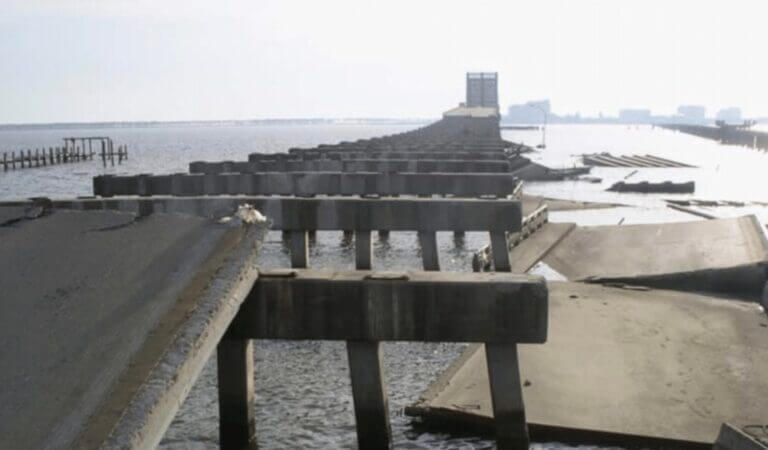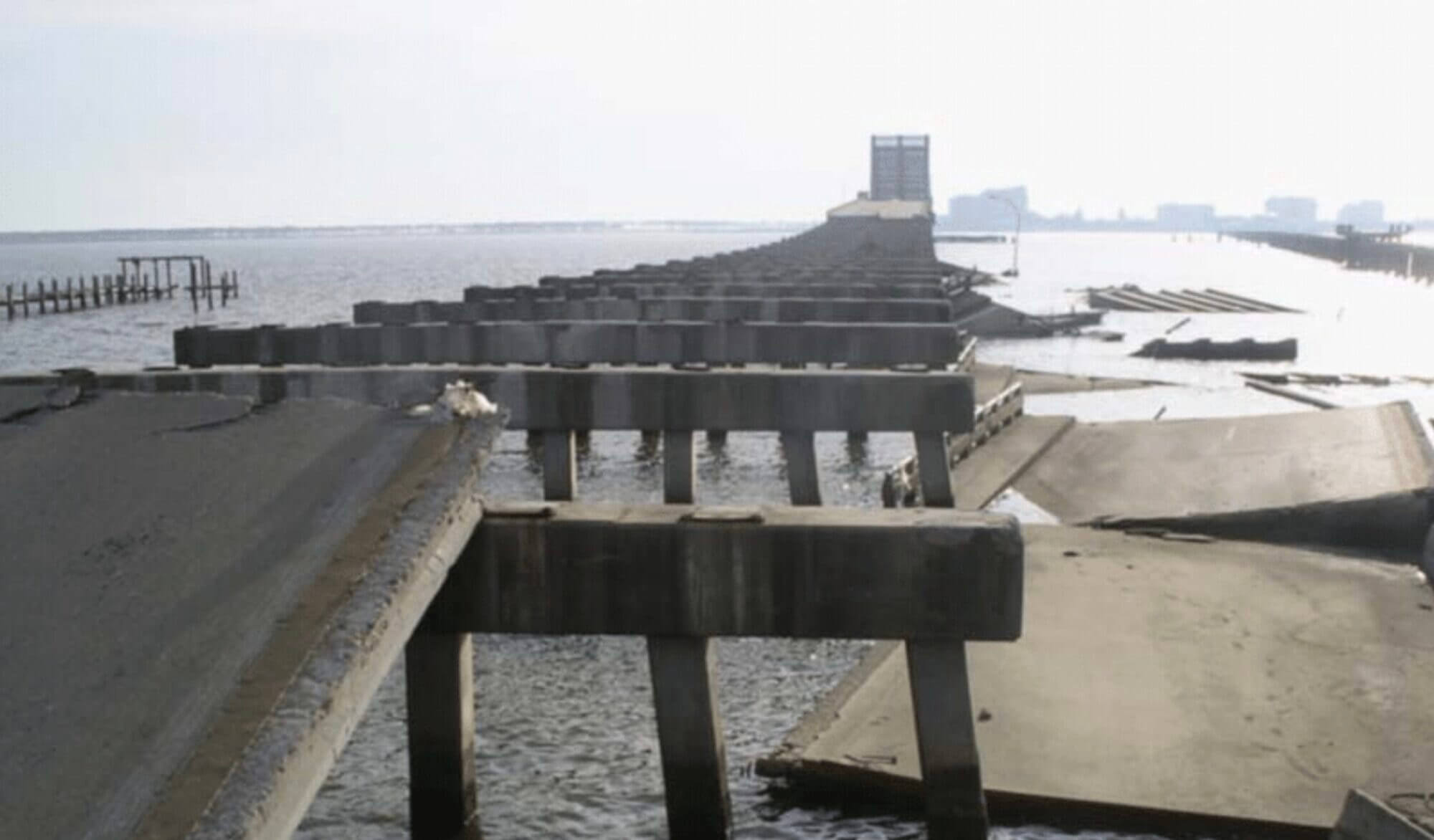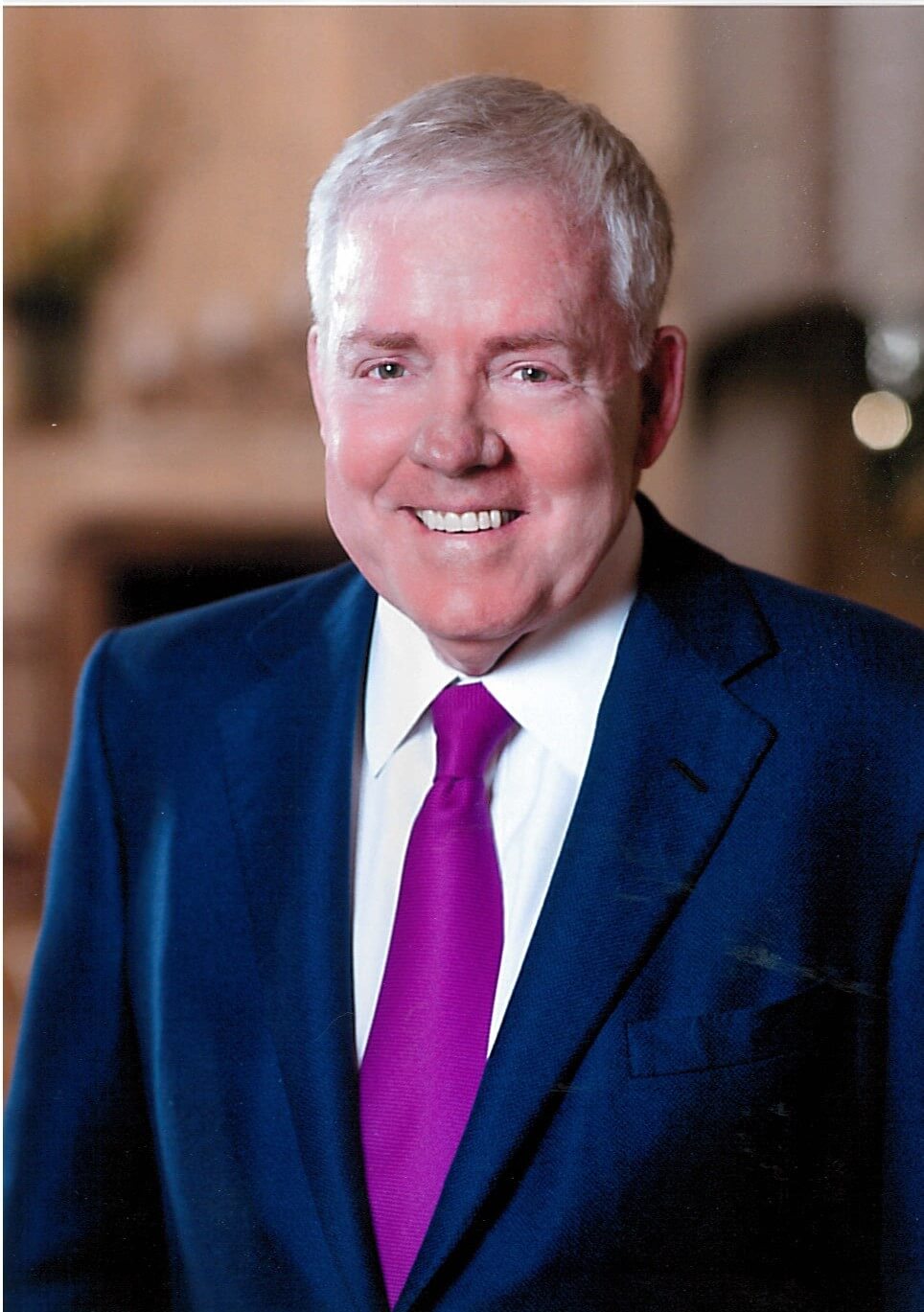

Twenty years ago this month, on Aug. 29, 2005, Hurricane Katrina ravaged the Mississippi Gulf Coast, destroying thousands of homes and much of the government infrastructure that provided critical public services to one of the state’s most populous regions.
Then-Gov. Haley Barbour, understanding the necessity of a well-organized, coordinated effort to clean up and plan to rebuild the coastal counties for the long-term future, tapped one of the state’s most successful business leaders, Jim Barksdale, to chair a special commission.

Barksdale, then 62 years old, had recently sold his company Netscape to AOL. He accepted the appointment to lead the entity tasked with deciding how hundreds of millions in federal and state recovery funds would be spent. Just a few days after the storm hit, he and his wife, Donna, flew from Jackson to the Coast, where they spent the first few months of their marriage living on the top floor of a casino resort in Biloxi while Jim led the commission.
Notably, leaders across the country have praised him for his service and modeled it in other post-disaster recovery efforts.
To commemorate the 20th anniversary of the storm, Barksdale sat down with Mississippi Today to recount his time leading the Governor’s Commission on Recovery, Rebuilding and Renewal in the fall of 2005.
Note: This interview has been edited for length and clarity.
Mississippi Today: Where were you when the storm hit 20 years ago, and what were you doing both professionally and personally? What did your life look like when the storm hit?
Jim Barksdale: It’s interesting because I was in a strange place. Donna and I had just gotten back from our honeymoon. We got back here around the first of August, and the storm hit the end of August. So the storm hit about three weeks after we got back. We continued our honeymoon a couple years later, but the storm definitely delayed all that. I was here in Jackson. I’d retired here after I sold Netscape to AOL. I was on probably five or six different corporate boards and commissions around the country, but other than that, I was able to take on the job.
MT: How long was it after the storm that you got to the Coast?
JB: Maybe a couple days after the storm hit, Haley Barbour and Leland Speed, who was his economic development director, called me and asked me if I’d come meet them. I met with them, they asked if I’d lead the effort, and less than a week later, we were on helicopters flying down there. One thing I remember from flying over the damage down there, which was extensive and just so incredible to see, was the smell of the beach down near Gulfport. They had these refrigeration warehouses for chicken poultry products waiting to be exported. They were all still there rotting and had not been cleaned out. Even from a few hundred yards above it, it smelled like we were on the ground. It was awful.
Up and down the Coast, it really looked like an atomic bomb had gone off. People say that all the time, but there’s no other way to describe it. There was really no way to get around. The National Guard had roads blocked off except for first responders and residents. Getting around the debris and the roadblocks was just about impossible unless you had some level of clearance.
We got down there, and the place we lodged ourselves was in a hotel called the Isle of Capri. The front of the building was all busted open from the storm surge and wind with all the slot machines showing. They were working hard to get the slot machines emptied out before they got robbed. The first two or three floors of the high-rise building were obliterated by the storm, but somehow the elevator worked to take us up to the room they gave us, which was on the top floor. The room was nice. It wasn’t touched. We had power and water. Up there, unless you looked down at all the mess and debris and the collapsed bridge over the bay, you wouldn’t have known anything had happened.
MT: How long were you and Donna there?
JB: Oh, three or four months on and off. We came back here (to Jackson) a few times and would head back down, but it was about three or four months we lived down there — until right around the first of the year (January 2006).
MT: Was it a surprise or was it unexpected to get the call from Gov. Barbour to head up this commission?
JB: It was a total shock. I didn’t really know Haley. I’d met him before, but we were not close at all. Haley had asked me to be his finance chairman when he first ran for governor (in 2003). Not too long before then, he had said some things publicly about me and the Microsoft hearings that really irritated me, and I turned him down. I hadn’t really talked to him again until he called me about Katrina recovery.
When I went to meet with him and Leland Speed, they asked if I’d lead the commission. I said, “Now look, is this because you’re being a statesman or is it for revenge over turning you down as finance chairman?” He laughed and didn’t really answer the question, but he told me that he thought I was highly qualified to lead a comprehensive effort like that, so I accepted. I was happy to serve the state in that way. Donna and I had just been married, and she calls it our “Category Five Honeymoon.”
Later, Haley and I got to be good friends. He’s still a good friend of mine.
MT: It’s hard to believe it’s been 20 years since the storm, but looking back on the work of the commission, what are some of your proudest accomplishments during your time as chairman and what y’all were able to do in those first few months?
JB: The thing I’m most proud of that we were able to accomplish is that we brought so many people of the Coast together to help them build plans for the future, and we gave them hope for their communities. Really, the most important thing we did was give them hope in such a difficult moment in time.
You know, as a group, we came in with this idea that the best way to get started was just get everybody involved, to get everyone busy. There was so much to consider. It may sound simple, but just getting started as quickly as we did was something to be very proud of.
We started these charrettes, or small working groups, as a way to get a lot of people involved in one project. We got the mayors involved as the leaders and some others involved, and let me tell you, it worked. They worked their cans off. The mayors were there every day, night and day. It was literally 24 hours for them. You’d go in at 2 o’clock in the morning, and there would be all the mayors in there working with their teams. We had architects and engineers flying in from literally all over the world helping us. There were architects from Italy that came, people from England that were part of the royal planners, Prince Charles’ team. It was amazing how many people from all over the world came and would just drop a team of people. We had renowned experts who were there to meet with the leaders of every Gulf Coast town and have them lay out their dreams.
We had a wonderful group of people, smart and hardworking who were there to transform these cities across the coastline. There wasn’t really anything for them to do except work — they obviously couldn’t go out and eat, couldn’t go out and have fun or anything, so they just worked. We fed them all there at that hotel, used their big ballroom to be the meeting places, and they broke off in the subcommittees in smaller rooms.
We divided the volunteers up in groups for each different community. If I remember correctly, there were 11 communities on the beach at that time. And we came up with some marvelous ideas for how to pull this place, to put it back together and take it into the future. Not all of them were implemented. Some of them were visions and dreams and so forth. Some worked, most didn’t. But they got some version of them working just about everywhere. That would be another thing I was proud of.
I’m also proud of the dozens of town halls we had during that time. I went to every one of them along with the local people. We would just sit there and answer questions from the citizens. And a lot of them were hard questions that we, quite frankly, didn’t have all the answers to. I think by the end of the meetings, people for the most part liked and appreciated the fact that we were there and being transparent and trying to answer all the questions. They were all scared and worried about the future, and we tried hard to make them feel heard and let them know we cared and were working very hard on their behalf.
I think we formed 11 committees run by some of Mississippi’s finest people — people who were mostly from the southern part of the state. We learned a lot from those meetings, and I remember there were a couple where people got up and cussed us, but it was really helpful for us to listen and apply what we heard to our planning.
MT: You’ve focused so much of your life and personal philanthropy on public education. I know that a big focus for you during your time leading the commission was getting schools back open. Can you talk about that?
JB: We knew we had to get the kids back in school. It was so important because if schools weren’t open, parents would move away. The storm hit right at the start of the school year, and many of these buildings were just totally washed or blown away. So we came up with the idea to have two schools running in one school building, for example. We’d have a morning school and an afternoon school. If there was a school building standing, we’d get kids from other schools to meet there for half a day just to get them back in the classroom somewhere. For the buildings that got destroyed in some cases, we brought down a bunch of house trailers to serve as temporary schools.
We reopened the last public school on Nov. 12, 2005. That was the day that New Orleans reopened their first public school. In New Orleans’ defense, they had decided that they’d use the storm as an opportunity to change everything over to charter schools. So they had to get the legislation done and do all that work, but the problem was that delayed getting kids back into classrooms. The children didn’t get into school nearly as quickly, most of them probably until after the first of the year (2006). Also, the Mississippi Coast didn’t lose as many people as New Orleans did. But we were very proud of how quickly we got classrooms and schools reopened.
MT: And I know there was a huge focus on housing for the thousands of people who were displaced and had nowhere to go.
JB: If I remember correctly, we lost about 4,000 housing units during the storm. Of course that’s counting homes, apartments, anywhere else a family could live, but we lost 4,000 housing units. We lost a whole group of Section 8 houses. We lost several big apartment buildings, and then we lost a lot of single family houses. The houses, in most cases, were just moved totally off of their foundations. They just floated away. You’d drive up on them and they looked like they were perfectly fine, but you’d look a little closer and see that they were sitting on dirt 50 yards from the foundation.
We spent a lot of time getting temporary housing built up and set up all over the place, just to get people somewhere they could live and survive. I could never get my head around exactly how we were going to build 4,000 units. But amazingly, within a few months, we had 4,000 units available at least temporarily. And after five years, we had 8,000 permanent new or rebuilt units available. I don’t think all of them were brand new, but they were good units. They were, in most cases, better and stronger than the 4,000 on average that we had lost. I would not have believed that.
MT: You’ve done a lot of really important things over the course of your life and career. With this experience, in particular, how did it stack up for you? What are some of the things that have stuck with you personally over these 20 years?
JB: I was proud to play a more individual role in some things, and I learned a lot from working with so many smart people. One of the best examples of that is after we’d gotten a big pot of money to rebuild the bridge over Biloxi Bay between Biloxi and Ocean Springs.
We got a design, a big curving design so you could take the ships under it with their masts to go to Trinity Yards and build yachts up there. But we wanted to do it at as little cost to people as possible. We had the money, and all we needed was the approval of the two mayors. So we had a meeting down at the Biloxi City Hall. There were a lot of people in there from representing the towns and architects and the builders and so forth, and it quickly became obvious during that meeting that we just weren’t going to get the mayor of Ocean Springs (Connie Moran) to sign off on a bridge design that didn’t have a walkway going alongside the bridge. The plan we’d drawn up for lower budget reasons didn’t have any architectural features on the bridge, it didn’t have any landscaping. That was the way we kept the price down. It was going to cost $9 million more or something like that to do those three things.
The mayor of Biloxi (A.J. Holloway) kept saying, “Look, we don’t want to go back and ask for more money. We got this all federal money, we’ve got it now, we don’t want them to pull any back, let’s just rebuild the bridge at a base level and get it back open.” He also kept arguing that nobody would use a walking trail over the bridge anyways, that it’d be too steep to climb, the climate was too hot, that we didn’t need it. Mayor Moran was strong, I give her credit. She was adamant that the walkway was necessary.
People started leaving because they didn’t think we’d find a resolution, and I asked the mayors, “Why don’t we go in another room here?” We got the mayors and the highway commissioner in a side room together. I forget who else was in there, maybe a couple more people. I looked at them and said, “We can make this decision right here. Now, Connie, your point is you are not going to accept this design unless it has these features, and A.J., you’re not going to accept the design if they modify it unless they come up with more money to pay for it.” I said, “Look, here’s the deal. I’ll either get or give the $9 million myself. You have my personal commitment to that.” We all shook hands and went back out and announced that we’d agreed to the design with the walkway.
The funny thing was the next morning, Butch Brown (the executive director of the Mississippi Department of Transportation) called me and he said, “Yeah, Jim, we’re not going to make you give that $9 million. We found the money in the budget somehow.” You know, in business, sometimes it’s just a matter of getting everyone in a room and coming up with creative solutions. That was an example of that.
A very funny part of this story is that I was down in Biloxi for the 10th anniversary of the storm. A.J. Holloway was there. He came over to me and he said, “Jim, I’ve got a terrible cold, but I had to come down here just to see you.” He says, “You realize this, but that bridge right now, that’s the most popular thing going on in this side of town. There are hundreds of people who walk over that bridge every day, they ride bicycles and everything.” He said he had even walked over it some. He said, “I just want you to know that I was wrong and I’m willing to eat crow.”
That was just one story of many, but it just shows you how important it was during that time to just find ways to bring everyone together and get buy-in from a lot of people with varying interests.
Editor’s note: Jim and Donna Barksdale are Mississippi Today donors and founding board members. Donors do not in any way influence our newsroom’s editorial decisions. For more on that policy or to view a list of our donors, click here.
- Mississippi is among the states where people are waiting for SNAP food aid for November - November 8, 2025
- A tool tracking billion-dollar disasters is active again after being retired by Trump administration - November 8, 2025
- Student enrollment is up for most of Mississippi’s public universities, including Delta State and The W - November 7, 2025